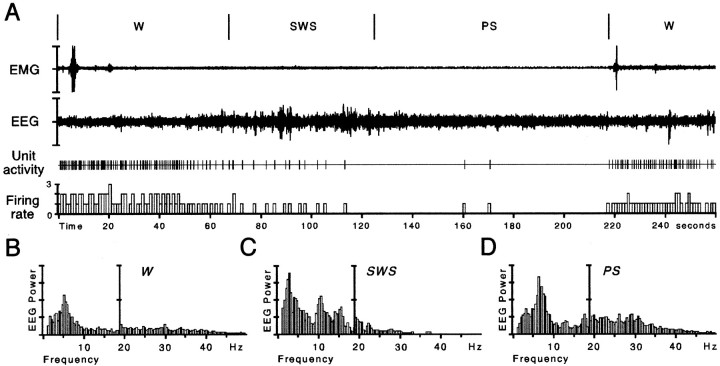Fig. 1.
Illustration of the activity of a DRN neuron during quiet waking (W), slow-wave sleep (SWS), and paradoxical sleep (PS).A, The electromyogram (EMG), the electroencephalogram (EEG), the unit activity of the neuron, and its integrated firing rate (in Hertz) are displayed. Each vigilance state is discriminated with the EMG, the EEG, and its power spectrum (B–D) in the low-frequency range (1.5–19 Hz), and the high- frequency range (19.5–50 Hz) shown at higher gain. During W (characterized by a low-amplitude EEG and a sustained EMG activity with phasic bursts), the DRN neuron discharges tonically at 1.6 Hz. During SWS [characterized by high-voltage spindles (10–14 Hz) and delta waves (1.5–4.0 Hz) on the EEG and a low muscular activity], the DRN neuron progressively decreases its firing rate to 0.3 Hz. During the subsequent PS episode [characterized by a desynchronized (activated) low-amplitude EEG with theta waves (5–9 Hz) and a flat EMG], the DRN neuron is virtually silent (0.02 Hz).

